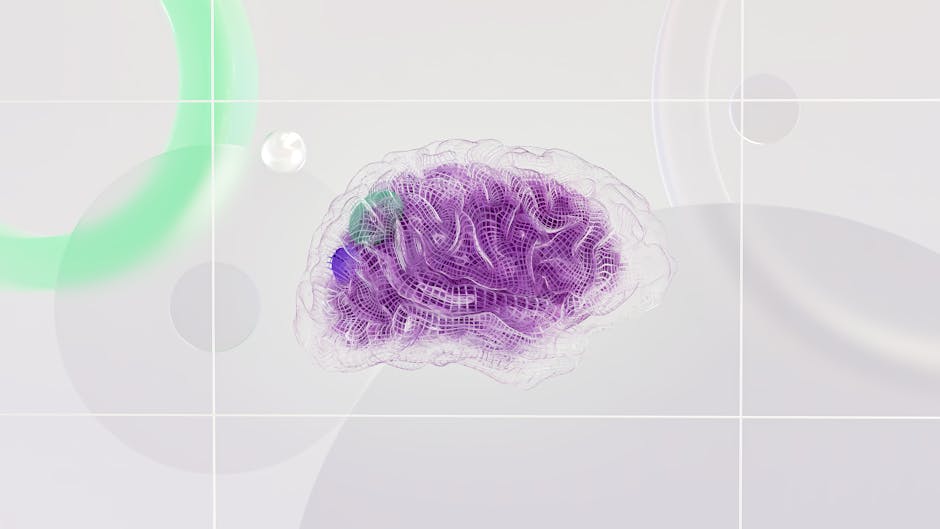Understanding Color Psychology
Color psychology is the study of how colors influence human perception, emotion, and behavior. In web design, color is not merely decorative—it's a powerful tool that shapes how users perceive your website, brand, and message.
Colors evoke emotional and psychological responses. Different colors communicate different messages and create different moods. Understanding these associations helps you choose colors that support your design goals.
It's important to note that color meanings are not entirely universal. Cultural context, personal experience, and individual differences affect color perception. However, certain color associations are reasonably consistent, especially within Western cultures.
Color Meanings and Associations
Red
Red is energetic, passionate, and stimulating. It attracts attention and creates urgency.
In web design, red is often used for:
- Call-to-action buttons (encourages immediate action)
- Warning or error messages (signals importance)
- Sales and promotions (creates sense of urgency)
- High-energy brands (Apple, YouTube)
Red's attention-grabbing nature means it should be used sparingly. Too much red can overwhelm users.
Blue
Blue is calming, trustworthy, and professional. It's the most popular color for corporate and business websites.
Blue is often used for:
- Professional and corporate designs (conveys trust)
- Financial services (suggests stability and security)
- Technology companies (suggests innovation)
- Social media platforms (Facebook, LinkedIn, Twitter)
Blue is versatile and works well in most contexts. Darker blues feel more serious, while lighter blues feel more approachable.
Green
Green represents nature, growth, and health. It's calming and suggests freshness and renewal.
Green is often used for:
- Sustainability and eco-friendly products
- Health and wellness brands
- Money and financial growth
- Successful actions (confirmation, "go" state)
Green communicates positivity and is pleasant to view for extended periods.
Yellow
Yellow is cheerful, optimistic, and energetic. It's attention-grabbing but can feel less stable than other colors.
Yellow is often used for:
- Highlighting important information
- Creating a friendly, approachable feel
- Warning signals (combined with other colors)
- Optimistic, youthful brands
Pure yellow can be straining on the eyes and should be balanced with other colors.
Purple
Purple is associated with luxury, creativity, and spirituality. It's considered more sophisticated than other colors.
Purple is often used for:
- Premium and luxury brands
- Creative industries
- Health and wellness (especially meditation/spirituality)
- Feminine-coded products (though this is changing)
Purple is less common in business contexts but highly effective for premium positioning.
Orange
Orange is energetic, friendly, and playful. It's less intense than red but more energetic than yellow.
Orange is often used for:
- Call-to-action buttons (balances urgency with friendliness)
- Creative and playful brands
- Energetic, dynamic companies
- Food and hospitality
Orange works well as an accent color and conveys enthusiasm and approachability.
Black
Black is sophisticated, powerful, and formal. It conveys seriousness and elegance.
Black is often used for:
- Luxury and high-end brands
- Typography (text on light backgrounds)
- Formal and professional designs
- Contrast and definition
Black provides excellent contrast and is essential for readability.
White
White represents clarity, simplicity, and purity. It's essential in web design for negative space and readability.
White is often used for:
- Backgrounds (especially for text)
- Creating breathing room and clarity
- Conveying simplicity and minimalism
- Luxury and premium brands (white space conveys exclusivity)
Gray
Gray is neutral, professional, and calm. It works well as a supporting color.
Gray is often used for:
- Backgrounds for content areas
- Typography for secondary information
- Disabled states (less important elements)
- Professional and corporate contexts
Gray can feel cold or boring if overused. Use it intentionally as a neutral support color.
Color Theory Principles
Beyond individual color meanings, color theory provides frameworks for combining colors effectively.
The Color Wheel
The color wheel organizes colors by their relationships:
- Primary colors (Red, Yellow, Blue) are the foundation
- Secondary colors (Orange, Green, Purple) are created by mixing primary colors
- Tertiary colors are created by mixing primary and secondary colors
Understanding the color wheel helps you create harmonious color combinations.
Complementary Colors
Complementary colors are opposite each other on the color wheel (e.g., blue and orange, red and green, yellow and purple).
Using complementary colors creates high contrast and visual excitement. Complementary color schemes are effective for:
- Call-to-action buttons
- Important elements you want to emphasize
- Creating visual hierarchy
- High-energy, vibrant designs
However, using pure complementary colors throughout can be overwhelming. Use them strategically for emphasis.
Analogous Colors
Analogous colors are adjacent on the color wheel (e.g., blue, blue-green, and green).
Analogous color schemes are harmonious and pleasing to view. They create a cohesive, unified feel. Analogous schemes work well for:
- Professional and corporate designs
- Calm, peaceful designs
- Creating visual unity
- Designs that should feel cohesive and intentional
Triadic Colors
Triadic colors are equally spaced around the color wheel (e.g., red, blue, yellow or orange, green, purple).
Triadic color schemes are vibrant and balanced. Each color gets equal visual weight. Triadic schemes work well for:
- Playful, energetic designs
- Designs with multiple distinct sections
- Creating visual interest while maintaining balance
Monochromatic Colors
Monochromatic color schemes use different tints, shades, and tones of a single color.
Monochromatic schemes are sophisticated and cohesive. They work well for:
- Creating a focused, intentional feel
- Premium and luxury designs
- Establishing visual hierarchy through different values
- Designs that should feel elegant and refined
Applying Color Theory in Web Design
Create Visual Hierarchy
Use color to guide users' attention. Brighter, warmer colors feel closer and more prominent. Darker, cooler colors feel distant and less important.
Use this principle to:
- Make important buttons and calls-to-action stand out (use brighter, warmer colors)
- De-emphasize secondary information (use cooler, more neutral colors)
- Guide users through your layout naturally
Support the Brand Identity
Colors should align with your brand personality and values.
A luxury brand should use sophisticated, muted colors (analogous or monochromatic schemes).
An energetic tech startup might use bright, complementary colors.
A calming meditation app should use cool, peaceful colors.
Ensure your color choices support and reinforce your brand message.
Establish Consistency
Maintain consistent color usage throughout your website:
Reserve one or two accent colors for calls-to-action and important elements.
Use a consistent color for links.
Use consistent colors for status indicators (red for errors, green for success).
Consistency makes your website feel more polished and helps users understand interface conventions.
Support Accessibility
While color psychology is important, accessibility must come first:
Ensure sufficient contrast between text and background.
Don't rely on color alone to convey information (use text, icons, patterns as well).
Test colors with color blindness simulators to ensure meaning isn't lost to people with color vision deficiency.
Cultural Considerations
Be aware that color meanings vary across cultures:
- White represents purity in Western cultures but is associated with mourning in some Asian cultures
- Red is lucky and auspicious in Chinese culture but represents danger or communism in Western contexts
- Purple can be associated with luxury in Western cultures but mourning in some other cultures
For international websites, research color associations in your target cultures.
Practical Web Design Color Strategy
1. Start with Brand Colors
Define your primary brand color or colors. These should reflect your brand personality and work across contexts.
2. Create a Color Palette
Develop a palette that includes:
- Primary color(s) (1-2 main brand colors)
- Secondary colors (supporting colors that work well with primary)
- Neutral colors (grays, blacks, whites for text and backgrounds)
- Functional colors (red for errors, green for success, yellow for warnings)
Ensure all colors meet accessibility contrast requirements.
3. Use Color Strategically
Reserve brand colors for important elements. Use them sparingly:
- Calls-to-action
- Key brand elements
- Important interactive components
Overusing brand colors dilutes their impact.
4. Create Visual Hierarchy
Use color value (brightness) to establish hierarchy:
- Important elements: brighter, more saturated colors
- Secondary elements: less bright, less saturated
- Tertiary elements: gray, desaturated, low contrast
5. Test with Users
Get feedback on your color choices. Do they evoke the intended emotional response? Are they effective?
Common Color Mistakes to Avoid
Using too many colors: Stick to 3-5 main colors plus neutrals. More colors create visual chaos.
Ignoring contrast: Colors must provide sufficient contrast for readability, even if that contrast feels harsh.
Relying on color alone: Always reinforce color-coded information with text, icons, or patterns.
Ignoring cultural context: Be aware of color associations in your target audience's culture.
Not testing with people with color blindness: Test your color choices to ensure meaning isn't lost.
Using trendy colors without considering permanence: Trendy colors might feel dated quickly. Use them as accents rather than primary colors.
Tools for Color Psychology
Color psychology resources:
- Color psychology guides and articles
- Brand color analyzers (tools that evaluate what a color conveys)
- Color blindness simulators (to test accessibility)
- Color palette generators that follow color theory principles
Understanding color psychology and theory transforms color from a decorative choice to a strategic tool. By applying these principles, you create websites that are not only visually appealing but also emotionally resonant, accessible, and effective at guiding user behavior toward your design goals.



